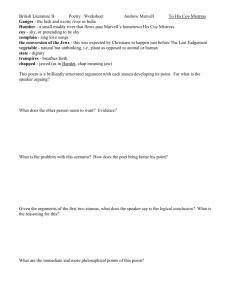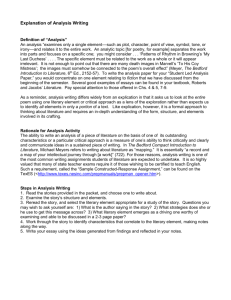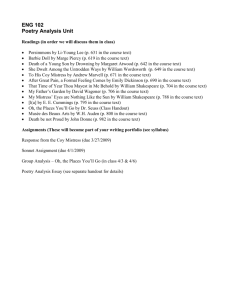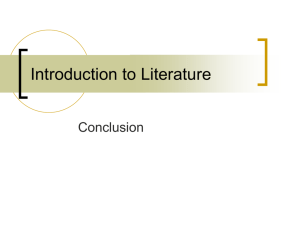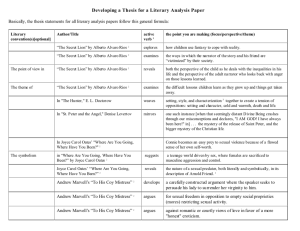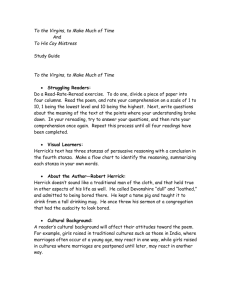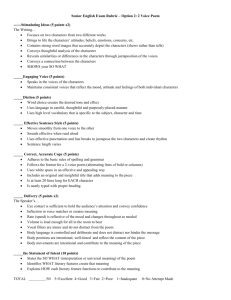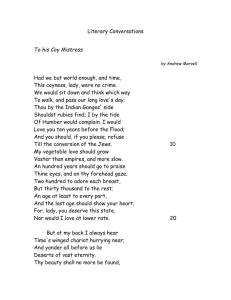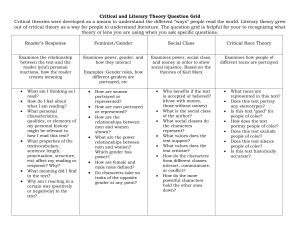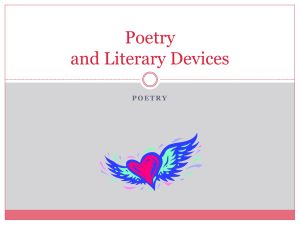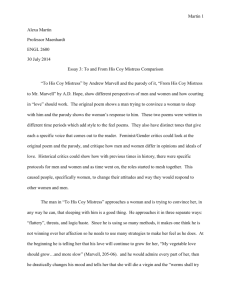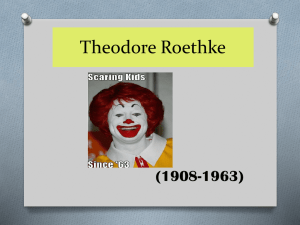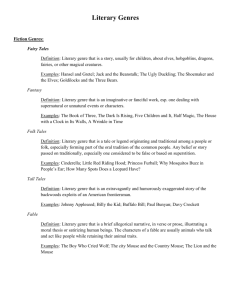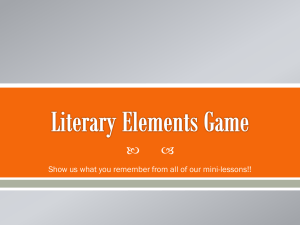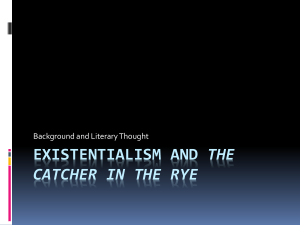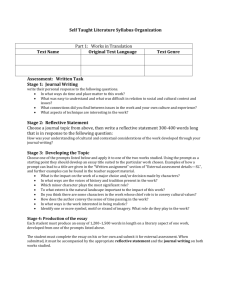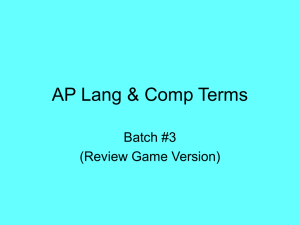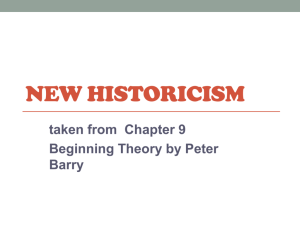Chapter 2: Traditional Approaches
advertisement
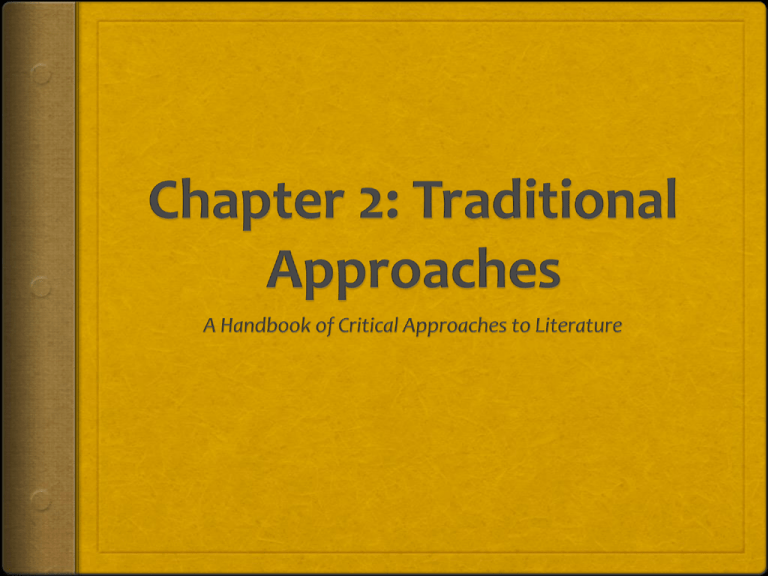
A Note on Traditional Approaches --the “old” historicism --New Criticism --New historicism and related approaches Textual Scholarship Textual critics research and edit a work in order to establish an accurate, authentic text for the reader: “what the writer intended” These critics prepare a reliable text for multiple methods of literary dissection and provide information about the genesis of a text Question: What is a “text”? Example: Hamlet Example: “To His Coy Mistress” 3 Matters of Genre Aristotle’s Poetics Frye, Hirsch, Scholes Genre Characteristics in Practice Plot Elements: Opening Situation Generating Circumstance (e.g., something happens) Rising Action Climax Dénouement 4 Source Study How did earlier writings, other works of art influence the text? The art of allusion Example: Influences on “To His Coy Mistress” 5 Historical-Biographical Approaches Focus is on the life, times, and environment of the author and/or the literary characters Nearly all literature is open to this approach Examines how these external factors affect the literary 6work Moral-Philosophical Approaches Examines the moral or philosophical issues within the literary text Approach goes back to Plato, Horace, Samuel Johnson, but has stayed relevant to modern readers Focuses on what is7 being taught Application of Traditional Approaches Marvell’s “To His Coy Mistress” The Text of the Poem The textual critic examines the meaning of the words and their variations The Genre of the Poem Critics determine the literary type or genre of a work to define its technical features and characteristics 8 Historical-Biographical Considerations The historical-biographical critic examines the life and times of Marvell in order to help understand the context of the poem. Moral-Philosophical Considerations The moral-philosophical critic explores what is being taught in the poem. The theme of carpe diem (seize the day) is prominent. 9
